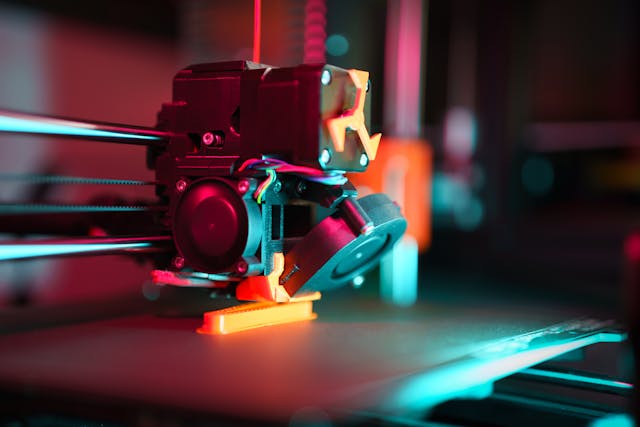
How can we 3D print organs? Organs can be 3D printed using an ink made of the patient’s own cells that are laid on a scaffold.
One of the problems we have as humans is that our organs sometimes fail. There are many reasons for this, from disease to accidents. Some organs we can live without. We only need one of our kidneys. We can live without our appendix, our spleen, and one of our lungs. Our liver can regenerate itself. However, there are a lot of other organs that we cannot survive without. We cannot live without our whole liver, we need our heart, and we need both of our kidneys. Without these organs, our bodies will shut down extremely quickly, unless we get medical intervention, such as dialysis, which is where the blood is pumped out of the body, cleaned by a machine, and then pumped back into the body. The only other option is a transplant. The problem with a transplant is that the organ will have a different genetic signature to the rest of our body and our immune system will do its best to kill it. We generally want our immune system to kill invaders into our body, but, in this case, we don’t. That means a course of immunosuppressant drugs for the rest of the patient’s life. The second problem with transplants is that the organ is usually taken from a deceased person and there is a huge shortage of organs. It is said that 17 people die waiting for an organ transplant every day. 3D printing of an organ could be the solution to this.
3D printing an organ is not something that will happen in the near future, but it will happen. In 2022, scientists and doctors managed to 3D print an ear for a patient that was born without one of their ears. The finished ear was built with the patient’s own cells and was successfully attached to the side of the patient’s head. It looks like a normal ear. 3D printing an ear and 3D printing a kidney are two very different prospects, though. Not to make light of the incredible work that went into making that ear, an ear doesn’t really do anything other than sit on the side of the head. A kidney has a myriad of complex tasks it needs to carry out to be a functioning organ. Scientists think that we might be seeing clinical trials of 3D printed organs by 2045. The way technology is increasing in speed, though, that could be sooner.
How would a 3D printed organ be made? The first step would be to harvest stem cells from the patient. We have a lot of stem cells before we are born, but once we start to age, the number drops. We have stem cells in our blood, in our bone marrow, in our tissue, and in our organs. Stem cells are cells that can become any other cell when they receive a command. 3D printing would need these. Once the cells were harvested, they would need to be mixed with a gel to make them into a paste. One day, the paste could be made with just stem cells, but that is a long way off. The stem cells are commanded to change into the cells needed and a 3D bioprinter lays the cells down in layers. Our organs consist of a lot of different cells and the 3D printer uses different nozzles that can alternate to lay down the cells as they are needed. The theory is that the printer would recreate the organ in its entirety and then a surgical team would put it in the body and connect all of the necessary blood vessels and nerves.
There are a lot of problems to be overcome yet. The first is that nobody has yet managed to make a full size organ. Tiny hearts have been made, but they are not scalable yet. The second problem is that the 3D printer uses a lot of pressure to force the biopaste out and that pressure can damage the cells. The third problem is the cost. Making the biopaste alone costs a lot of money. Our organs have billions of cells and these would all need to be produced in the lab. The fourth problem is that the 3D printers are not fine enough to print at such a microscopic level. The fifth problem is speed. If you have ever 3D printed anything, you know that they take a long time. It takes ages to 3D print an organ and it has to be kept alive somehow. And the sixth problem would be fitting in the organ into the body. There would be thousands of blood vessels to correct. Perhaps, by the time 3D bioprinting is perfected, complex surgery like that will be performed by robots, and they wouldn’t have any trouble connecting all of the blood vessels. I will be 68 in 2045. I wonder if I will be able to get a 3D printed organ. And this is what I learned today.
Sources
https://www.mayoclinic.org/tests-procedures/bone-marrow-transplant/in-depth/stem-cells/art-20048117
https://fortune.com/well/2023/02/15/3d-printed-organs-may-soon-be-a-reality
https://builtin.com/articles/3d-printed-organs
Photo by Jakub Zerdzicki: https://www.pexels.com/photo/3d-printing-18296466/

Pingback: #552 Why are organ transplants so difficult?
Pingback: #778 How was a mummy made?
Pingback: #788 How do our organs stay where they are when we stand up?